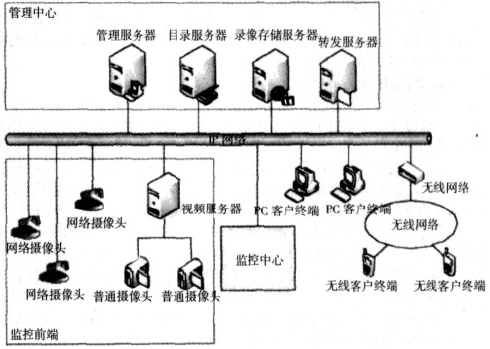41.如何禁止对话框关闭按钮和浮动工具条上的系统菜单
1、禁止对话框中的关闭按钮有二种方法。
第一种方法,用ModiftMenu()涵数来实现:
CMenu* pMenu = this->GetSystemMenu(FALSE);
pMenu->ModifyMenu(SC_CLOSE,MF_BYCOMMAND | MF_GRAYED );
第二种方法,用EnableMenuItem()涵数来实现:
CMenu* pMenu = this->GetSystemMenu(FALSE);
pMenu->EnableMenuItem( SC_CLOSE, MF_BYCOMMAND|MF_GRAYED);
2、禁止浮动工具条上的系统菜单。
新建一个CToolBar的派生类CxxToolBar,在新类中的左键双击(CxxToolBar::OnLButtonDblClk(...))
和左键单击(CxxToolBar:: OnLButtonDown(...))涵数中分别加入下面代码既可:
if (IsFloating()) //工具条正在浮动状态中
{
CWnd* pMiniFrame;
CWnd* pDockBar;
pDockBar = GetParent();
pMiniFrame = pDockBar->GetParent();
//去除其上系统菜单
pMiniFrame->ModifyStyle(WS_SYSMENU, NULL);
//重绘工具条
pMiniFrame->ShowWindow(SW_HIDE);
pMiniFrame->ShowWindow(SW_SHOW);
}
3、禁止窗口最大化按钮
在PreCreateWindow()涵数中去掉WS_MAXIMIZEBOX风格显示既可。
BOOL CxxFrameWnd::PreCreateWindow(CREATESTRUCT& cs)
{
cs.style &= ~WS_MAXIMIZEBOX;
return CFrameWnd::PreCreateWindow(cs);
}
42.如何拷贝一个工程的对话框资源到另一个工程中?
有两种方法可以实现:
1)你可以直接拷贝resource,用VC++以文本的方式或者直接用文本编辑器打开.rc文件,将有关的片段从
一个工程拷贝到另一个工程.你可以通过查找如下字样的片段(此片段用来定义对话框资源)来拷贝你要
的部分:
IDD_MYDIALOG_ID DIALOG DISCARDABLE 0, 0, 235, 55
这里的IDD_MYDIALOG_ID是你的对话框的ID,将到此片段结尾的部分全拷下来,通常你还要给新的工程
加一个ID(通过DevStudio的工具或者直接修改resource.h文件).
2)可以通过DevStudio的copy/paste功能.首先,在编辑器以"auto"模式打开.rc文件,这时resource
正确的显示出来.然后,选中要拷贝的对话框的ID,在Edit菜单里选Copy或者按住Ctrl+C.然后打开目标
resource文件,在Edit菜单里选Paste或者按住Ctrl+V.
43.如何实现点一下对话框外面的区域,自动隐藏对话框?
[问题提出]
如果想在点击对话框外面的地方使得对话框关闭,该如何做?
[解决方法]
试试下面的代码,原理是在激活对话框时,捕获鼠标的动作,当鼠标点击时判断是否点击在对话框外,是的话就释放对话框.
[程序实现]
建立名为My的对话框程序.实现如下步骤:
在MyDlg.h中加入:
class CShowWindow1Dlg : public CDialog
{
// Construction
public:
int m_cx;
int m_cy;
......
};
在MyDlg.cpp中:
//定义消息映象,处理鼠标单击及激活
BEGIN_MESSAGE_MAP(CMyDlg, CDialog)
//{{AFX_MSG_MAP(CMyDlg)
ON_WM_LBUTTONDOWN()
ON_WM_ACTIVATE()
//}}AFX_MSG_MAP
END_MESSAGE_MAP()
void CMyDlg::OnLButtonDown(UINT nFlags, CPoint point)
{
CRect rect;
GetClientRect(&rect);
rect.InflateRect(m_cx, m_cy);
//Release dialog if the user click outside it.
if(!rect.PtInRect(point))
{
EndDialog(IDCANCEL);
}
CDialog::OnLButtonDown(nFlags, point);
}
void CMyDlg::OnActivate(UINT nState, CWnd* pWndOther, BOOL bMinimized)
{
CDialog::OnActivate(nState, pWndOther, bMinimized);
if( nState == WA_ACTIVE || nState == WA_CLICKACTIVE)
SetCapture();
else
ReleaseCapture();
}
BOOL CMyDlg::OnInitDialog()
{
CDialog::OnInitDialog();
.....
OSVERSIONINFO info;
memset((char*)&info, 0, sizeof(OSVERSIONINFO));
info.dwOSVersionInfoSize = sizeof(OSVERSIONINFO);
if(GetVersionEx(&info))
{ //we don't run on Win32s, so check only two values
if(info.dwPlatformId == VER_PLATFORM_WIN32_WINDOWS)
{ //On windows 95
m_cx = GetSystemMetrics(SM_CXFIXEDFRAME);
m_cy = GetSystemMetrics(SM_CYFIXEDFRAME);
}
else
{ //On NT
m_cx = GetSystemMetrics(SM_CXDLGFRAME);
m_cy = GetSystemMetrics(SM_CYDLGFRAME);
}
}
}
说明:
1)WM_ACTIVATE消息在ClassWizard中没有,按如下步骤添加,右击CMyDlg类,选Add Windows Message Handle,接着在Filter for messages available to中选Window,在New Windows messages/events列表中就会出现WM_ACTIVATE,选中,点击Add Handler
2)SM_CXDLGFRAME,SM_CYDLGFRAME NT中取得有WS_DLGFRAMEstyle风格的窗口的高和宽 95中已经废弃而采用SM_CX_FIXEDFRAME和SM_CYFIXEDFRAME
44. 初始化应用程序的大小
如果想使应用程序界面(文档)在开始运行是按你的尺寸展现在屏幕上,
添加代码如下:
BOOL CMainFrame::PreCreateWindow(CREATESTRUCT& cs)
{
int xsize=::GetSystemMetrics(SM_CXSCREEN);
int ysize=::GetSystemMetrics(SM_CYSCREEN);
cs.cx=xsize*5/10;
cs.cy=ysize*5/10;
cs.x=(xsize-cs.cx)/2;
cs.y=(ysize-cs.cy)/2;
}
其中的5/10是你的初始界面占屏幕的百分比,可以自己修改。如果想使应用程序大小固定添加cs.style&=~WS_THICKFRAME;
45. 如何得到视图指针?
[问题提出]
现在你有一个多线程的Demo,你想在多线程里处理视图指针里的函数,我们给这个函数起个名字:Put();该如何实现呢?
//有两种方法可以实现你的要求:
//1)第一种方法:
//要是多线程不是在App.cpp里出现,那么要在多线程的.cpp中加上extern CYourApp theApp;
//获得文档模板:
POSITION curTemplatePos = theApp.GetFirstDocTemplatePosition();
CDocTemplate *m_doc=theApp.GetNextDocTemplate(curTemplatePos);
//获得文档:
curTemplatePos=m_doc->GetFirstDocPosition();
CYourDoc *m_pdoc=(CA8Doc*)m_doc->GetNextDoc(curTemplatePos);
//获得视图:
curTemplatePos=m_pdoc->GetFirstViewPosition();
CYourView *m_pview=(CYourView*)m_pdoc->GetNextView(curTemplatePos);
//调用视图函数:
m_pview->Put();
//2)第二种方法:
//获得窗体指针:
CMainFrame *pFrame = (CMainFrame*)AfxGetApp()->m_pMainWnd;
//获得与该窗体符合的视图:
CYourView *m_pView = (CYourView *) pFrame->GetActiveView();
//调用视图函数:
m_pView->Put();
46. 如何使我的程序在启动时不创建一个新文档?
在程序的InitInstance中的ProcessShellCommand函数之前加入: cmdInfo.m_nShellCommand = CCommandLineInfo::FileNothing
47. 如何将标题栏上的右键菜单屏蔽掉?
[解决方法]
右键菜单是系统菜单,只要将其WS_SYSMENU的属性去掉即可.
[程序实现]
int CMainFrame::OnCreate(LPCREATESTRUCT lpCreateStruct)
{
........
long style = GetWindowLong(m_hWnd, GWL_STYLE);
style &= ~WS_SYSMENU;
SetWindowLong(m_hWnd, GWL_STYLE, style);
return 0;
}
48.如何全屏显示(没有标题,没有菜单,没有工具条)
[解决方法]
重载CMainFrame的ActivateFrame函数:
void CMainFrame::ActivateFrame(int nCmdShow)
{
CRect cRectdesktop;
WINDOWPLACEMENT windowplacement;
::GetWindowRect(::GetDesktopWindow(),&cRectdesktop);
::AdjustWindowRectEx(&cRectdesktop,GetStyle(),TRUE,GetExStyle());
windowplacement.rcNormalPosition=cRectdesktop;
windowplacement.showCmd=SW_SHOWNORMAL;
SetWindowPlacement(&windowplacement);
CFrameWnd::ActivateFrame(nCmdShow);
}
49.如何设置有背景颜色的文本
(1)[解决方法]
用到了CDC::SetBkMode();
[程序实现]
void CMyView::OnDraw(CDC* pDC)
{
CMyDoc* pDoc = GetDocument();
ASSERT_VALID(pDoc);
CRect rcView;//加這兩句
GetClientRect(rcView);
// TODO: add draw code for native data here
CString str (_T("Perfect Text..."));
pDC->SetBkMode(TRANSPARENT);
rcView.OffsetRect (1,1);
pDC->SetTextColor(RGB (0,0,0));
pDC->DrawText(str,str.GetLength(),rcView,DT_SINGLELINE | DT_CENTER | DT_VCENTER);
rcView.OffsetRect(-1,-1);
pDC->SetTextColor(RGB (255,0,0));
pDC->DrawText(str,str.GetLength(),rcView,DT_SINGLELINE | DT_CENTER | DT_VCENTER);
}
(2) 建立名为My的SDI或MDI,并响应WM_ERASEBKGND.
BOOL CMyView::OnEraseBkgnd(CDC* pDC)
{
// TODO: Add your message handler code here and/or call default
CBrush Brush (RGB(114,147,171));
// Select the brush into the device context .
CBrush* pOldBrush = pDC->SelectObject(&Brush);
// Get the area that needs to be erased .
CRect ViewClip;
pDC->GetClipBox(&ViewClip);
//Paint the area.
pDC->PatBlt(ViewClip.left,ViewClip.top,ViewClip.Width(),ViewClip.Height(),PATCOPY);
//Unselect brush out of device context .
pDC->SelectObject (pOldBrush );
// Return nonzero to half fruther processing .
return TRUE;
return CView::OnEraseBkgnd(pDC);
}
此方法也适合基类是EditView的SDI或MDI的情况,但是字体的颜色和底色不行.建议用WM_CTLCOLOR.
50.串太长时往让其末尾显示一个省略号(在SDI或MDI的View中)
[问题提出]
如何在串太长时往让其末尾显示一个省略号(在SDI或MDI的View中)?
[程序实现]
建立名为My的SDI或MDI工程.
void CMyView::OnDraw(CDC* pDC)
{
CMyDoc* pDoc = GetDocument();
ASSERT_VALID(pDoc);
// TODO: add draw code for native data here
pDC->DrawText(CString("It's a long string,so we will add a '...' at the end."),CRect (110, 110, 180, 130),DT_LEFT | DT_END_ELLIPSIS);
//Add ellpsis to middle of string if it does not fit
pDC->DrawText(CString("It's a long string,so we will add a '...' at the end."),CRect (110, 140, 300, 160),DT_LEFT | DT_PATH_ELLIPSIS);
}







